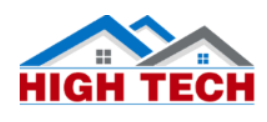HDB Waterproofing works
In Singapore, the Housing and Development Board (HDB) waterproofing is a very important segment of building repair as it helps avoid water leakage and moisture formation and commonly used in wash areas and roofs. In general, the necessary waterproofing preserves the performances of the construction and provides comfortable and safe living conditions of residents. Here are common HDB waterproofing methods:
1. Liquid Waterproofing Membrane
Application: Liquid based waterproofing is one that is directly applied on surfaces such as floor and walls of any building’s bathroom, kitchen or terraces. Drying it creates a thin, unbreakable and elastic film over the surface that has been treated with the liquid.
Advantages: It offers full coverage that has seams or joints on the walls and ceilings.
Works well in the irregular or hard to get cover areas.
Easily adjustable to building movement and has the potential to grow and shrink.
Materials: Some of these are the acrylic emulsion, polyurethane and cementitious waterproofing liquid applied ones.
2. Cementitious Waterproofing
Application: This technique is a technique of applying cement-based compositions containing additives so as to obtain cement paste, which is then used to coat walls or floors to prevent water infiltration.
Advantages: Designed to be used in areas which are prone to be moist such as the wash rooms and the kitchen.
Highly rugged and can withstand other mechanical pressure.
Simple to apply and inexpensive.
Materials: Cementitious waterproofing is chosen for foundation, basement, and walls, and comprises solutions and slurry which; set to a hard mass from which water cannot penetrate.
3. Bituminous Membrane
Application: A bitumen based membrane is widely used for laying flat roofs, terraces etc. and also for external applications. It is normally encapsulated by a torch-on system where it is melted and bonded onto the outer surface.
Advantages: Ideal for places such as roof tops and terraces where there is lot of traffic.
Provides effective protection for the skin against water as well as against other conditions associated with weather changes.
Good for large surface areas.
Materials: The bituminous membrane can also by subjected to polymerization to enhance flexibility through the prevention of crack formation.
4. Polyurethane (PU) Coating
Application: In order to avoid water seeping through the floor or terrace covering, polyurethane based coatings is used. It is normally applied in showering area, balcony or in the rooftop of building or homes.
Advantages: Very resistant to water, chemicals, and even abrasion.
Durable and may be either developed or reduced in size in accordance with structural fluctuations.
Offers a smooth and shiny outlook the seems resistant to wear and tear.
Materials: Polyurethane is normally used in the form of a liquid coating and when it has cured form a flexible and water resistant product.
